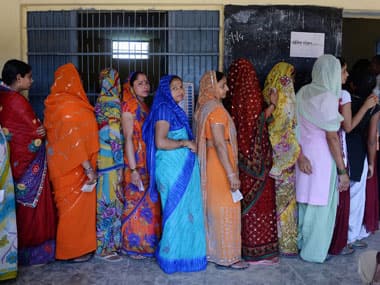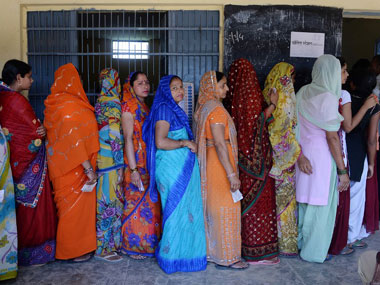Once you tour a few sprawling Lok Sabha constituencies and speak to people across the social spectrum, you can’t but reach the conclusion that India’s system of parliamentary representation is deeply flawed. At the nub of this flaw is the disconnect between the popular imagination about the role of the Member of Parliament (MP) and the legislative and deliberative functions the Indian Constitution has scripted for him or her. MPs are expected to participate in the framing of laws, participate in debates over domestic and foreign policies of the government, not only critiquing but also reining it from an executive over-reach. They are the voice of their constituencies, expected to articulate the issues agitating those whom they represent. No doubt, these functions of MPs are vital to retain India’s coherence as a nation-state. But talk to people and you realise the MPs’ performance in Parliament isn’t what they are judged on. Instead, people grade them on parameters the MP is not much in control of – the development work undertaken to alleviate the deplorable living conditions that blight the lives of those living outside metros and state capitals. Another yardstick people employ to evaluate the performance of their MPs is their accessibility. Did s/he on getting elected to Parliament continue his or her dialogue with the people initiated before the elections, commiserating with them in their demeaning daily grind or mounting pressure on the district administration to provide them succour? The electorate pines for an intimate relationship with its MPs, wishing to see and speak to them, regardless of the efficacy of this dialogue. [caption id=“attachment_1474797” align=“alignleft” width=“380”]  Voters queue up at a polling booth. AFP.[/caption] Yet, this dialogue is inconceivable considering the scale of representation in India. The Lok Sabha constituencies are mammoth, on average comprising an electorate anywhere between 16 lakhs and 18 lakhs. Add to it those who are not on the electoral roll and you have an MP representing a population of 25 lakhs. Compounding this problem is the sheer spread of constituencies, combining bustling towns and remote hamlets and having a social diversity truly bewildering. A conscionable MP wishing to establish personal contact with his or her electorate must commit enormous resources, energy and time. This is precisely why our democracy has spawned the patronage system: the MP maintains personal contacts with influential, often wealthy, individuals, often referred to as mofussil elites, hoping they would help harvest votes in return for favours shown to them, ranging from facilitation of business deals to securing an out-of-turn treatment in government hospitals in Delhi. In no position to address the aspirations of people, political leaders harness caste, religious or linguistic identities to mobilise votes. They turn elections into an issue of group or community pride and solidarity. This isn’t to say social structures – caste and religion – have no salience of their own, but their significance is enhanced manifold because, in many ways, these are the most cost-effective methods of mobilisation in the shortest possible time. Indeed, the mammoth size of the constituencies provides an intrinsic advantage to big political parties, whether regional or national, which are best placed to mobilise enormous election funds. Money is needed to bankroll advertisement campaigns and party footsoldiers who together enable a candidate to establish a presence substantial enough to impress voters about the probability of his or her victory, and for pay-offs to leaders of social groups to which he or she doesn’t belong but want their votes. No doubt, there have been leaders who have successfully fought on meagre resources, painstakingly building their parties at the grassroots. But then, they had the patience to play for the long-term. Take Kanshi Ram, who long before the Bahujan Samaj Party (BSP) became a force, travelled in trains, on foot, or cycled from village to village to build a strong cadre of leaders wedded to his political idea. Yet, as the BSP grew and sought a majority on its own, its purity of purpose was diluted, not the least because it reportedly began to hawk party tickets to the highest bidder. Again, the Aam Aadmi Party (AAP) successfully fought the Delhi assembly elections on the donations from its supporters. But then, assembly segments in Delhi are densely populated, facilitating a door-to-door to campaign. It’s debatable whether the AAP model can be replicated in the Lok Sabha elections outside metros. The disconnect between the Constitutional contemplation and the popular perception of the MP’s role was the principal factor behind the demand to initiate the Members of Parliament Local Area Development Scheme (MPLADS). In his meticulously researched book, Public Money, Private Agenda: The use and abuse of MPLADs, journalist A. Surya Prakash says the idea of having a separate development fund for MPs was a consequence of the delinking of Assembly elections from Lok Sabha elections, which, till 1967, were held simultaneously. However, Indira Gandhi decided to hold the Lok Sabha elections in 1971, a year before they were due, triggering unintended repercussions. Prakash writes, “Until 1967, Lok Sabha candidates nominated by major political parties enjoyed a great deal of anonymity because the people were more focussed on candidates to the state assembly, who were their immediate representatives.” They were immediate representatives in the sense that it is the state government which can resolve most of the problems people encounter in their ordinary existence. Till 1967, therefore, the MP piggybacked the MLAs of his or her constituency. Prakash writes, “Voters only knew that they should stamp on the same symbol on the two ballot papers – for both the ‘upper vote’ and ‘lower’ vote. The MP was therefore nothing more than the man or woman who got the ‘upper vote’!” It was easy to exercise this choice because the era of Congress domination hadn’t yet ended. The delinking of Lok Sabha and assembly elections provided MPs with a personality of their own, but also mounted pressure on them to address their electorate’s concerns to bag their votes. It was this realisation which prompted MPs to clamour for a separate fund to meet the needs of their constituencies. Thus the MPLADs was launched in 1993, and each MP was entitled to recommend projects worth Rs 1 crore a year from 1994-95, further enhanced to Rs 5 crore per year from 2011-2012. Considering the enormous size of Lok Sabha constituencies, an expenditure of Rs 25 crore over five years, even when diligently spent and monitored, can’t lead to overwhelming changes in the lives of citizens. The sheer diversity of the population, and therefore of needs as well, tends to create sharp dissonance among voters. The efficacy of MPLADS is further eroded because of defalcation of funds. No wonder, sitting MPs increasingly incur the wrath of voters. For instance, 60 per cent of sitting MPs who contested the 2009 Lok Sabha elections in Uttar Pradesh lost. The Samajwadi Party fielded 21 sitting MPs, of whom only nine were re-elected; a mere three of the 19 sitting Bahujan Samaj Party MPs managed to win; and only two out of the six BJP sitting MPs survived the 2009 elections. The Congress bagged, unexpectedly, 22 seats, yet only five out of its 14 sitting MPs triumphed in 2009. The list of sitting MPs who won in 2009 mostly comprised those who boasted a national profile, or were dynasts, or caste and religious leaders, or had a certain glamour quotient. Some of them combined all these attributes. Sample the names – Sonia Gandhi, Rahul Gandhi, Jaya Prada, Mulayam Singh Yadav, Akhilesh Yadav, Neeraj Shekhar, who is former prime minister Chandra Shekhar’s son, Dharmendra Yadav, who is Mulayam’s nephew, Maneka Gandhi, Mahant Adityanath, Ajit Singh, Kalyan Singh, Jitin Prasad, who is the son of former Congress Vice-President Jitendra Prasada, Beni Prasad Verma, Union minister who has been propped up as the Kurmi leader from Uttar Pradesh, and Sri Prakash Jaiswal, whose stature grew when he was made the minister of state for Home in 2004. Indeed, India’s representative system will increasingly seem a sham unless it undergoes surgery to diminish the undue influence of big money, caste and religion. For starters, the existing parliamentary constituencies should be split and the role of MPs redefined in accordance with the popular imagination.
Once you tour a few sprawling Lok Sabha constituencies and speak to people across the social spectrum, you can’t but reach the conclusion that India’s system of parliamentary representation is deeply flawed.
Advertisement
End of Article


)
)
)
)
)
)
)
)
)



